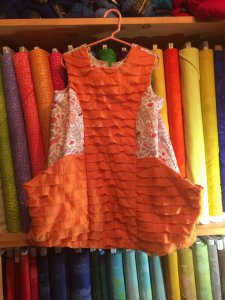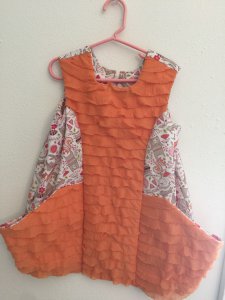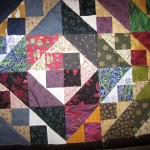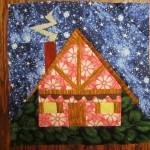I have entered posts about sewing with ruffle fabric in the past, but there were a few specifics with this dress that I wanted to point out.
First of all, people shouldn’t be afraid to sew with Ruffle Fabric. It looks scary initially but what you have to remember the whole time that you’re doing it is that it’s polyester. For some reason, polyester got a bad rap. We used it a lot in the 70s. I remember so many variations of polyester and I was a brand new little kid sewist in the 70s. Trust me, I wasn’t very old. We used it for everything and I mean everything. But I digress.
Polyester is very forgiving and workable. The ruffles are what scares people. Just remember one thing and that will make life a lot easier…hand baste. Words to live by. Hand basting is just what is says. You load a hand-stitching needle with thread and you baste. You make long stitches that hold things in place. Why is this a metaphor for life, as the title of this blog post states? Because there are so many things in life that would go much easier if you just prepare yourself first. Painting a wall? Do the prep work first. Repainting furniture? Scape and sand first. Going to high school with the plan of continuing on to college? Do your homework and learn it well. Putting together a “needs some assembly” piece of equipment like a bed or a bike? Read the directions first! So, hand basting is key to much of what we do as sewists.
If you take the time to hand baste the ruffles in the same direction, you will save yourself time by not having to rip. No one likes to hand baste but no one likes to rip either.
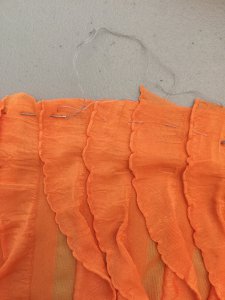
So, lay your pattern on the ruffle fabric just like any other pattern.
1. Make sure to smooth the ruffles so that there are not any ones that are flipped in the opposite direction.
2. Make sure that your fabric isn’t hanging over the edge of your cutting surface. This will cause drag, and when you start cutting, pieces will pull your pattern right off the table.
3. Pin well. There should be a pin every 2 inches, at least.
4. I haven’t used pattern weights but you may want to use pattern weights and a rotary cutter to cut this stuff because it may keep it flatter. Give it a whirl and let me know if it works!
5. Notches are hard to cut on this fabric so find a marking pen and use that to mark notches. Notches are essential!
Once the ruffle fabric is cut, cut a piece of fusible woven interfacing. You will want this because it will be on the inside of the garment, but you will be able to see it. This is for backing the ruffle fabric. If it is woven and fusible that’s good too. If it’s not fusible you can baste it under the ruffle fabric. You can also use fabric that you are using for the dress so that when you look inside the garment you aren’t seeing that awful non woven interfacing.
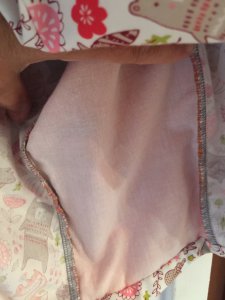
Here is the inside of the dress with the Ruffle Fabric Panel in the center. You can see that it is lined with woven interfacing. Looks pretty good.
Ruffle fabric doesn’t have to be hemmed. So, you can leave the edge, provided it works in your design. Here the end of the dress needed to be hemmed anyway, and that would make it shorter than the ruffle pattern. I solved this dilemma by putting a binding type hem on the dress.
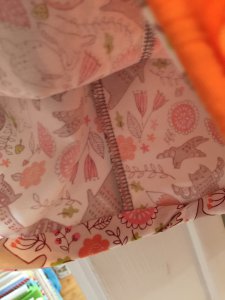
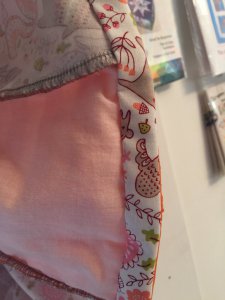
It worked out really well. It’s also a good plan if you want to extend your piece without shortening it.
Here it is. It’s a great dress for a little girl with lots to put in her pockets!
